Search Results for 'Urban District Council'
12 results found.
St Patrick’s Band, the early days
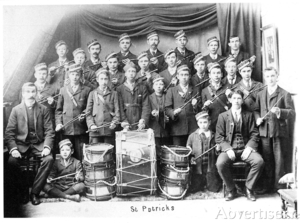
One of the most enduring of Galway's institutions is this band which has given pleasure to its own members and countless thousands of members of the public since it was formed in Forster Street in 1896. Thanks to dedicated leaders and teachers, this group of musicians continues to entertain. The founders were Peter Rabbitt, a Forster Street publican and grocer, Paddy Walsh, the station master and Michael Spelman of Moon’s staff.
Developments in the Claddagh
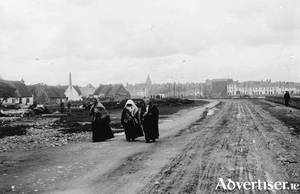
Towards the end of the 19th century, the Claddagh started to go into decline, thanks mainly to the local fishermen not updating their methods of fishing. This economic decline continued into the last century so, when the Urban District Council announced in 1916 that they were starting a reclamation programme of the 30-acre field that was known locally as ‘The Swamp’, it caused a lot of excitement locally. A small working committee was established to carry out the details of organisation. From then on the area was to be known as South Park. I am not sure where that title came from, maybe they regarded the Square as East Park, Salthill Park as Westpark, but where was North Park?
O’Flaherty’s Garage
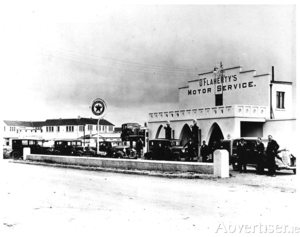
Patrick O’Flaherty bought an old thatch cottage in 1901 and converted it into a two-storey house which would become Numbers 15 and 16 Upper Dominick Street, part of which became a small shop operated by his wife Aggie (née Staunton) and part became O’Flaherty’s Garage. They operated a hackney service and advertised “Galway’s leading hire service in luxurious charabancs and motors (touring and saloon). All tours through beautiful Conemara radiate regularly from O’Flaherty’s”.
The homes of Woodquay
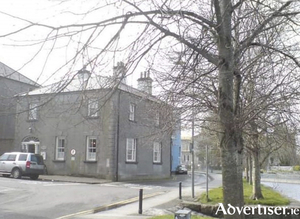
As we pointed out last week, much of what we now know as Woodquay was under water until the funnelling of the various streams that came down from the Corrib into the river that we know today began in the mid-19th century. As part of the project, the lands of Woodquay were gradually reclaimed. The people living in the area in those early years were mostly small farmers and fishermen. Their houses were very basic, single story, and for the most part, thatched and built of crude stone. There were of course some landmark houses but things began to change generally around the turn of that century with the construction of terraces of new slated houses around the broad space of Woodquay as we know it today, mostly built by the Urban District Council.
Joe Young’s aerated waters
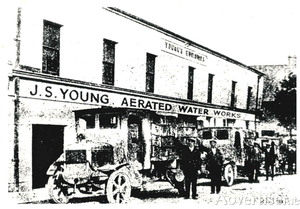
Joseph Young was appointed manager of Messrs Thomas Tracey’s Mineral Water Works and Licensed Premises in Mary Street after the death of Thomas Tracey. He later married the niece of Mrs Tracey, Miss Edith O’Connor of Clifden, and Mrs Tracey signed over the works to Joe Young on the marriage.
Upper Salthill, a bird’s eye view, c1945
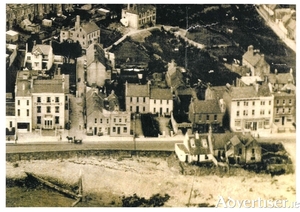
This aerial photograph was taken c1945. On the left you can see the Eglinton Hotel which was originally built in the 1860s. Up to that time, Salthill was a small village that included Lenaboy Avenue and the area between what we know as Seapoint and the Bal. The construction of the Eglinton was on a scale not seen before in Salthill, and it extended the village to the west. It came at a time when locals were beginning to promote the village as a resort, a destination for tourists.
Big George & The Four-Faced Liar
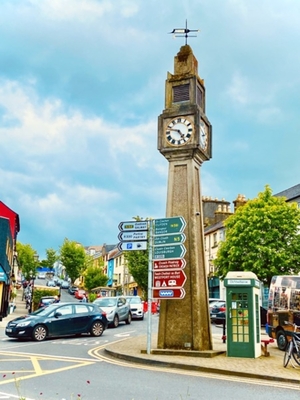
Focal points in public spaces in towns and cities across Ireland take many forms. Many of them speak to a specific moment in time.
The Rockland Hotel

In 1923 Forster Park, the residence of Gerald Cloherty, clerk of the crown and peace for County Galway, sold his house to surgeon Michael O’Malley. In July 1935 the Connacht Tribune reported that the purchase of plots in front of the house recently occupied by Dr O’Malley, and the question of allowing the purchasers to proceed with the building immediately, or to force them to defer until the road along the Promenade had been widened, was the subject of a long discussion at the Urban District Council meeting.
The handing over of Galway Gaol
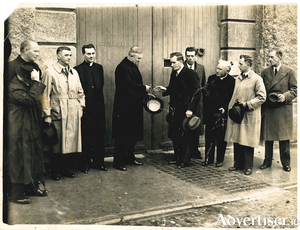
Galway City and County gaols were built at the beginning of the 19th century on a large site which took up most of Nuns Island. Construction was conditional on a right of way, the road all around the walls, also being built. James Hardiman, the historian, described it as follows: “The Prison …. Is built in the form of a crescent …. The interior of which is divided into eight wards ….. separated by walls which form so many radii of a circle, and, terminating in the rear of the governor’s house, bringing the whole range within many of his windows, by which means he can, at a single glance, survey the entire.”
Mícheál Walsh, The Old Malt
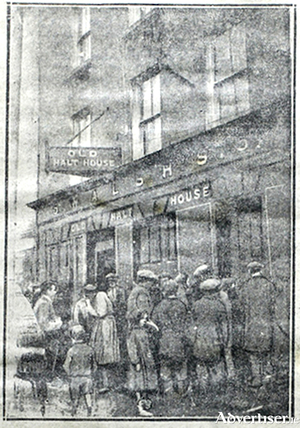
On September 22, 1920, 12 Black and Tans burst into the Old Malt Pub on High Street, breaking down the door and rushing upstairs to where Mícheál Walsh’s wife and children were sleeping. They demanded to know Mícheál’s whereabouts and then they searched the building, firing shots, exploding grenades, terrifying the children, and causing extensive damage to the property. They also broke open the safe and stole its contents, as well as taking money from the till in the bar. Clothing, alcohol, and tobacco were also stolen during the raid. The taps were opened on the barrels and then doors, cabinets, and furniture was smashed. The damage was estimated at £1,000.

